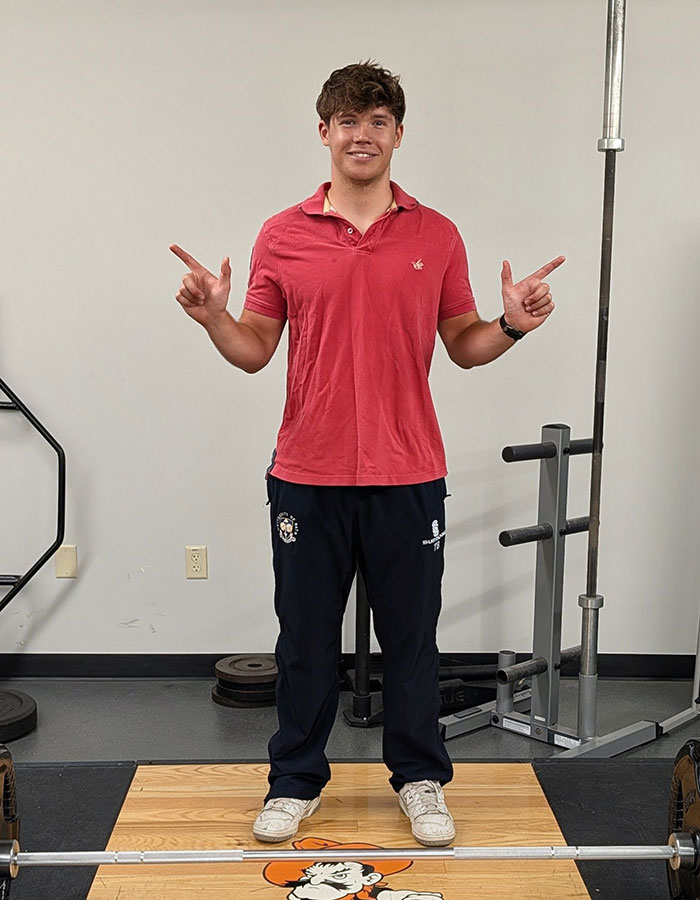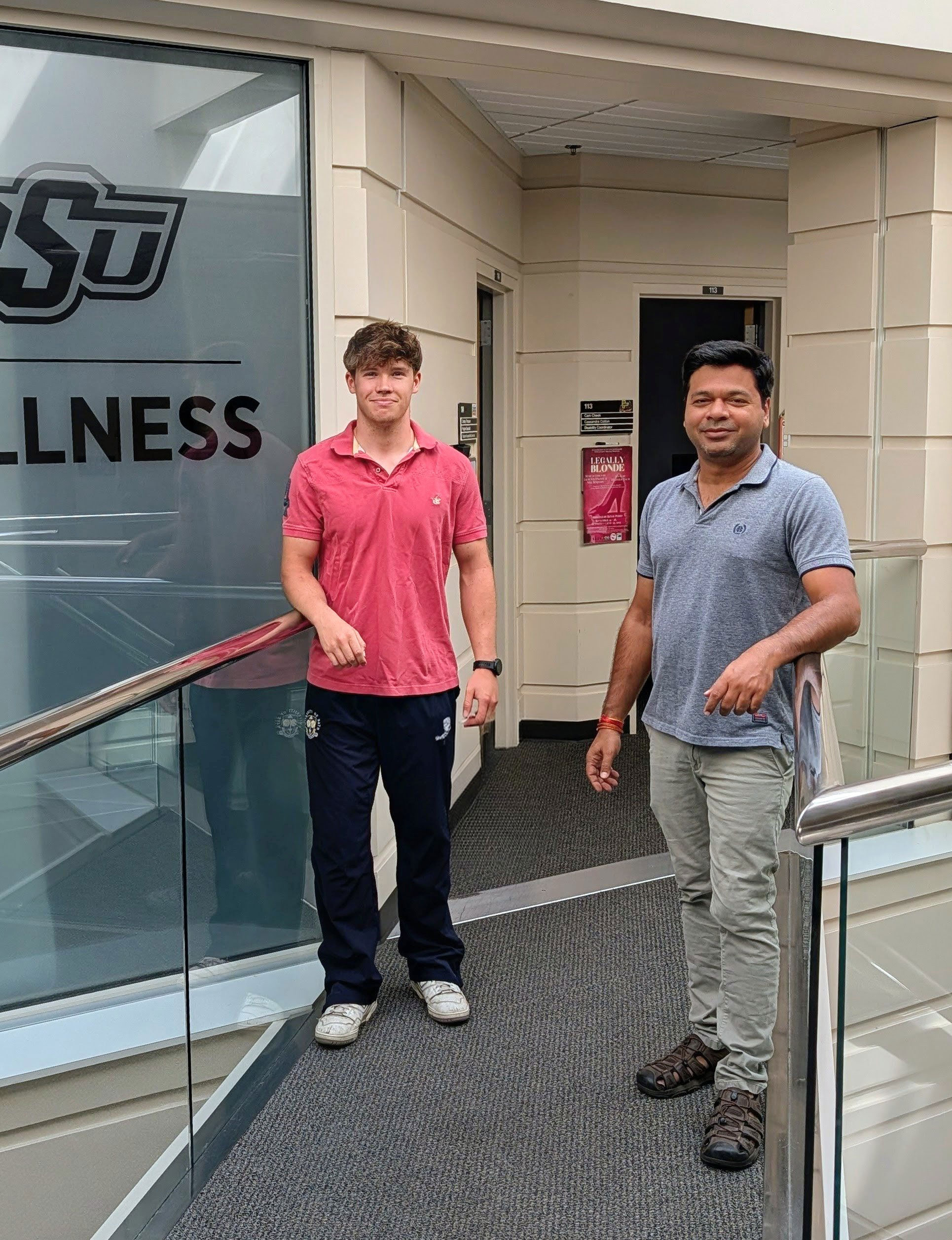
From Pedals to Performance: How OSU student brings global perspective to human performance
Tuesday, October 7, 2025
Media Contact: Sydney Trainor | Communications and Media Relations Specialist | 405-744-9782 | sydney.trainor@okstate.edu
When Tom Booth was learning to ride a bike as a child in England, he imagined a career in competitive cycling.
It turns out, his actual career path was not quite as easy as riding a bike.
Booth never planned to go to college, but when all his friends started going, he gave it a shot and enrolled at the University of Bath in Bath, England.
As an undergraduate sports science student, Booth had completed two years of school when he realized he’d probably spend the rest of his life in the United Kingdom. Although his dream as a Tour De France competitor had shifted, Booth still yearned to blaze a different trail.
So, he started looking for ways to continue his education abroad.
One of Booth’s best friends is a runner on the Oklahoma State University track and field team. So, he used connections to get in contact with Dr. Ali Boolani, associate director of research and strategic initiatives at the OSU Human Performance and Nutrition Research Institute. The next thing Booth knew, he was starting the semester in Oklahoma.
At HPNRI, Boolani connected Booth with Dr. Harshvardhan Singh, an implementation scientist.

Singh’s research focuses on wearable technology to improve postural recovery. This helps people recover after losing their balance from tripping or falling.
Booth is collaborating with Singh and Dr. Collin Bowersock, principal scientist, to study how the brain and body work together during walking, especially when comparing younger and older adults.
“Tom, even in the short time he has been here, has already added a vibrant layer to the dynamics of work that I'm doing,” Singh said.
Booth is also collaborating on projects in kinesiology and engineering for a well-rounded experience.
“We are working together with five engineering students — Alec Murray, Ronnie Walker, Iris Borunda, Bruce Smith and Ian Craft — Dr. Jason Miller, kinesiology assistant professor and Dr. Jerome Hausselle mechanical and aerospace engineering assistant professor, to design a new type of muscle-bone strengthening exercise device, specifically for older adults who may have low self-confidence or at risk to exercise using weights. ” Singh said. “It's a highly ingenious way of progressive resistance exercise which can be modulated in unique ways, and all of this is achieved without using weights. Tom has already brought some unique perspective to that.”
A large component of human performance research is collecting data. At HPNRI, Booth is receiving training on equipment used to track how the brain responds during different types of physical activity and capture stress, anxiety or fear when participants are asked to increase physical activity.
Although Booth has only been at OSU for a few months, he’s already helped Singh write a review article for an indexed journal about how to improve workplace design and ergonomic practices for health care workers’ safety and wellbeing
This article will be submitted in response to a special call by the journal on Oct 15 with Booth as the co-primary author.
“We just finished writing the review paper on the ergonomic recommendations for orthopedic surgeons, which is quite interesting,” Booth said. “Nothing that I would have ever done myself, but it's something that is a new experience.”
Even with his name already on a paper, Booth is looking forward to leading his own projects and contributing more ideas to others.
“I’m really jumping into everything that I can. There’s not one specific one; I'm working on everything they're doing here,” he said.
Booth is currently enrolled in a five-year integrated master’s program that combines his two years of undergraduate study, one year at OSU, and two additional years at the University of Bath to culminate in a master’s degree.
In his spare time, Booth works with his old cycling team and helps coach individuals to reach peak performance.
While he never imagined a career in academia, Booth sees how the research can have an impact on the sport he loves.
“If I can use my degree and my love for cycling at the same time, that's what I'm trying to do at the moment,” Booth said.
